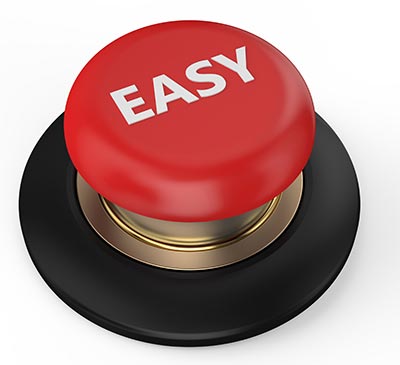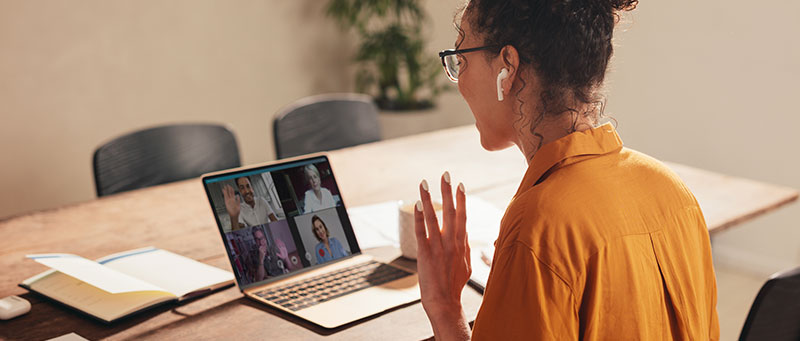It’s a Zoom world we live in.
I joined a Zoom meeting along with 67 other professionals last week. Tiny Brady Bunch squares popped up all over my computer screen, most of them with a simple first name to represent who was ‘behind’ the square. Only a handful of faces looked back at me. The brave few who actually turned on their cameras.
Since the pandemic started last year, Zoom has become a verb. “Hey, let’s Zoom this afternoon, okay?” “Can we Zoom to see if we’re on the same page with this project?”
And not only will this Zoom verb likely make it into the dictionary, Zoom fatigue has also become a common term, a common phenomenon, a common challenge for so many.
The leader of the 67-person Zoom meeting sent us into small breakout rooms shortly after the session began. I looked at two women and one person-less square, JB1115. We’d been tasked with answering three questions in the eight minutes we had together in the breakout room.
After those of us on video had shared our ideas, I asked JB1115 if he/she had anything to add. Silence. I tried one more time. Silence.
The next thing I knew, we were back with the whole group, and the leader continued her presentation.
Later, we were once again sent to breakout rooms. This time there were only two others present. One was on video, and the other wasn’t.
Both of my breakout room partners seemed preoccupied. With Zoom as my mirror, I quickly realized my confusion was showing up on my face. (Thanks, Zoom, for the constant reflection.)
The woman on camera shared that she was actually in another meeting at the same time. Then we heard the ‘faceless’ woman speak up to say she was in the same situation. Both of them were attending the presentation responsible for the breakout rooms WHILE they were silently attending another virtual meeting.
Is this really what it’s come to?
So let’s go back to the Zoom fatigue I mentioned a short time ago. There’s a great deal of information available on why it happens and what we can do to overcome it. And I do believe this is a current challenge for so many professionals who have been on video calls for the past fourteen months. It’s a thing, for sure.
But let’s take that fatigue and go a few steps further. What about work fatigue, in general? What about the push to hustle and go, go, go without regard for your overall well-being? What about having no boundary between work time and personal time when your work space is at your dining room table? What about spending your days in back-to-back meetings (and sometimes in meetings on top of meetings) with barely enough time to take a restroom break, let alone a break to truly relax and de-stress?
The hustle culture is alive and well, and the pandemic has only exacerbated it.
My clients tell me how they feel when hustle mode gets the best of them. Rapid heartbeat. Shortness of breath. Headaches. Low energy. Insomnia. Eating everything in sight or nothing all day long.
And I’m not immune to hustle mode, either. It still gets me at times. It can be alluring for a bit before the suffocation of it is in my orbit. It’s the premise that ‘more, more, more’ is always better. (It’s not.)
Always know you have control.
I have learned some tactics that help me. Tactics I use and also recommend to clients. Tactics that allow us to ‘stop the ride’ of the hustle we know we don’t want.
- Be aware and speak your truth.
Everything starts with awareness. Know the signs of hustle and overwhelm you experience, and acknowledge them when they show up. “Oh, I feel you, heartbeat. I know you’re beating faster than normal, and that’s your signal that I’ve taken on too much. Thanks for the reminder.” - Focus on who you want to be.
Continue that conversation with yourself with attention on the person you want to be. When you look at your weekly calendar and see no empty blocks of time, tell yourself, “I don’t want to be the person with a completely full calendar. I’m the type of person who gives my best by not overscheduling myself. I know I achieve better results that way.” - Practice self-compassion.
And the self-talk keeps going. When you realize you’ve fallen into the hustle mode you know you don’t want, don’t berate yourself. Instead, talk to yourself like you’d talk with children when they learn to ride their bikes. “Hey, I get it. It can be hard. But you were made for great things. You can do this.” Rather than put yourself down, give yourself some love with a nice dose of self-compassion. - Add creative solutions.
I hear frequently that life and work are what they are. There’s just too much to do in too little time. I don’t buy that story. There are always creative solutions. And thankfully, you’re an intelligent person who can produce them. Perhaps you’ll decide to block off 15-20 minutes after each meeting so you have time to decompress. Maybe your solution will be to have only a certain number of meetings per day or week. Or your solution might be to make a choice of which meeting to attend rather than attend two at once. (Going back to the women in the Zoom meeting, even though I don’t know them personally, I have a strong suspicion neither of them got much out of either meeting they were attending. Double-booked meeting attendance is pretty much a guarantee of no valuable takeaways.) - Commit to continued problem solving.
And finally, don’t give up. The hustle culture is like the weeds that pop up every spring in your lawn. Even though you did the work last year to prevent them. Even though you were told you had the perfect solution to eliminate them for good. Even though you’d decided you’d never have to deal with them again, they’re back. The same will be true for the hustle mode you experience. It creeps in even when you think you’ve figured it out. And that’s okay. Because you don’t give up easily. You’re persistent. You’re resilient. You’re courageous. You’re intelligent. And you’ve got this.
Thanks for taking time out of your day to read this. In a world where there are many options on how you spend your time, I value your interest and support here. Let’s stick together and continue to say NO to the hustle.




